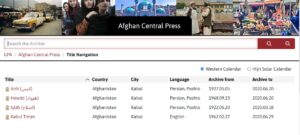International & Area Studies
Trial of Brill’s Revolución y Cultura, 1961–2003 (ending February 21, 2023)
Revolución y Cultura, 1961–2003(Cuba)
Please access the trial through February 21, 2023, here
At UC Berkeley Library, we have several individual issues of Revolución y Cultura, however, Brill has produced a complete digitized archive of it that is searchable. We have set up a trial of this resource through February 21, 2023. We look forward to hearing your comments regarding the utility of this resource in your teaching and research. Please feel free to contact your librarian for the Caribbean and Latin American Studies here.
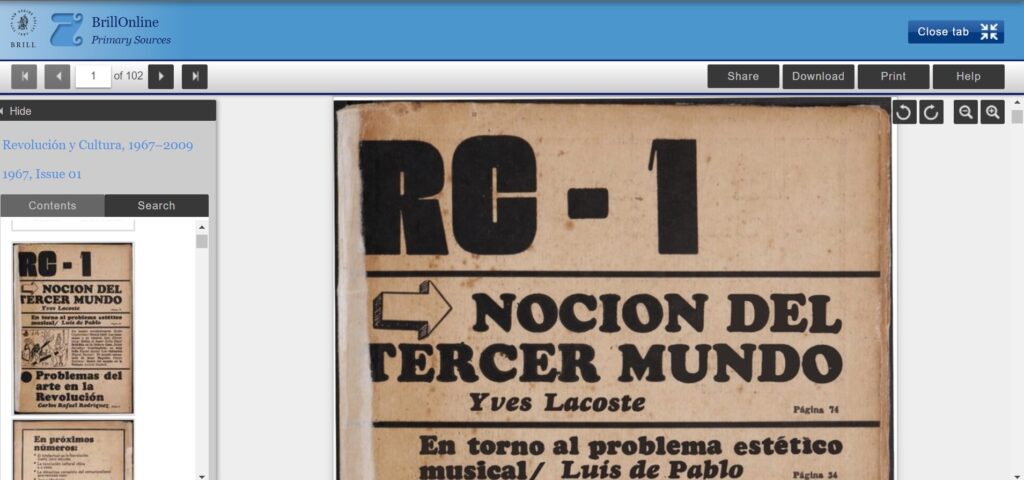
About:
Revolución y Cultura is a fundamental and often unique resource for the study of more than half a century of Cuban culture. Founded as a biweekly in 1961 under the title Pueblo y Cultura and continued in 1965 as the bilingual magazine Revolution et/and Culture and as RC in 1967, Revolución y Cultura has published uninterruptedly since March 1972. From its foundation until 1977, when the Cuban Ministry of Culture was created, it appeared as the official organ of Cuba’s National Council of Culture.
From 2004 to 2019 it was published both in print and electronically. Since mid-2019, Revolución y Cultura is published online only. Revolución y Cultura is listed in the UNESCO Portal of Culture of Latin America and the Caribbean (Source: Brill)
New Book by Michael Iarocci
Widely acknowledged as a major turning point in the history of visual depictions of war, Francisco de Goya’s renowned print series The Disasters of War remains a touchstone for serious engagement with the violence of war and the questions raised by its artistic representation.
The Art of Witnessing: Francisco de Goya’s Disasters of War provides a new account of Goya’s print series by taking readers through the forty-seven prints he dedicated to the violence of war. Drawing on facets of Goya’s artistry rarely considered together before, the book challenges the notion that documentary realism and historical testimony were his primary aims. Michael Iarocci argues that while the depiction of war’s atrocities was central to Goya’s project, the lasting power of the print series stems from the artist’s complex moral and aesthetic meditations on the subject.
Making novel contributions to longstanding debates about historical memory, testimony, and the representation of violence, The Art of Witnessing tells a new story, print by print, to highlight the ways in which Goya’s masterpiece extends far beyond conventional understandings of visual testimony.
[from publisher’s site]
Michael Iarocci is professor of Modern Spanish Literature and Culture (18th-21st centuries) in the Department of Spanish & Portuguese and the Associate Dean of Arts and Humanities at UC Berkeley. He received his Ph.D. from the University of Pennsylvania. Comparative and Transatlantic Hispanic Studies. Literature and geopolitics. Aesthetics and ideology. Visual culture. His previous books include Enrique Gil y la genalogía de la lírica moderna (Juan de la Cuesta, 1999), and Properties of Modernity: Romantic Spain, Modern Europe and the Legacies of Empire (Vanderbilt University Press, 2006).
The Art of Witnessing: Francisco de Goya’s Disasters of War.
Toronto: University of Toronto Press, 2023.
New Book by Henrike Christiane Lange
In this book, Henrike Lange takes the reader on a tour through one of the most beloved and celebrated monuments in the world – Giotto’s Arena Chapel. Paying close attention to previously overlooked details, Lange offers an entirely new reading of the stunning frescoes in their spatial configuration. The author also asks fundamental questions that define the chapel’s place in Western art history. Why did Giotto choose an ancient Roman architectural frame for his vision of Salvation? What is the role of painted reliefs in the representation of personal integrity, passion, and the human struggle between pride and humility familiar from Dante’s Divine Comedy? How can a new interpretation regarding the influence of ancient reliefs and architecture inform the famous “Assisi controversy” and cast new light on the debate around Giotto’s authorship of the Saint Francis cycle?
Illustrated with almost 200 color plates, including individual images of each scene in the narrative cycle, this volume invites scholars and students to rediscover a key monument of art and architecture history and to see it with fresh eyes.
“Henrike Lange’s book on Giotto’s Arena Chapel changes our view of this key work of painting in Italy around 1300.” – Ulrich Pfisterer, Director of the Zentralinstitut für Kunstgeschichte; LMU, Munich
“Dr. Lange’s discovery is so all-encompassing and so to the point… It is now possible to bridge the Anglo-Saxon and Italian views of Giotto where once they were thought to be irreconcilable: a great step forward for the field.” – Laurence B. Kanter, Chief Curator, Yale University Art Gallery
“Lange shows how the theme of triumph is at once central and inexhaustible in the Arena Chapel – its structure, imagery, physical presence, context. The book is itself a vivid triumphal procession of ways of seeing, scholarship, discovery, and critical thinking.” – Randolph Starn, UC Berkeley History
“Lange’s discovery is completely new and original: an entirely convincing case built on the foundations of history, literature, philosophy, political iconography, and theology.” – Andrew Stewart, UC Berkeley History of Art and Classics
“Lange has the rare ability to build bridges for the reader with her command of European languages that allow her to translate and integrate the vast libraries of research on Giotto written in different linguistic and scholarly traditions. The very elegance and clarity of her writing suggest that Lange’s will be a contribution of real significance and will have quite an impact on medieval and Renaissance studies.” – Giuseppe Mazzotta, Sterling Professor of Italian, Yale University
“At its heart Lange’s impressive book relays an intensely visual argument. It is a scholarly triumph in itself to explicate the intimate relation – architectural, political, theological – between the Arena Chapel and a famous Roman prototype, the Arch of Titus. All scholars and students of the period will need to engage this powerful historical proposition and its implications for Italian Trecento visual culture. But Lange also finds the full measure of Giotto’s triumph as a painter.” – Whitney Davis, UC Berkeley History of Art
[from publisher’s site]
Henrike Christiane Lange is Associate Professor in History of Art and Italian Studies at the University of California, Berkeley. Lange completed her Magister Artium at Universität Hamburg, Germany, before earning her PhD at Yale University. The present book is the culmination of two decades of research at sites, archives, and collections across Europe.
Giotto’s Arena Chapel and the Triumph of Humility.
Cambridge: Cambridge University Press, 2023.
Call for papers: Wisconsin Slavic Conference
Wisconsin Slavic Conference
March 24-25, 2023
University of Wisconsin-Madison
Abstracts for 20-minute papers on any aspect of Slavic literatures, cultures (including film, music, and the visual arts), linguistics, and history are invited for the annual Wisconsin Slavic Conference. Comparative topics and interdisciplinary approaches are welcome and encouraged. The conference will be held in person at the University of Wisconsin-Madison on Friday and Saturday, March 24 and 25, 2023. Recent conference programs are available on the Wisconsin Slavic Conference website at https://gns.wisc.edu/2022/04/19/wisconsin-slavic-conference-2022/
This year’s keynote lecture will be delivered by Professor Yuliya Ilchuk (Stanford University).
To present a paper at the Wisconsin Slavic Conference, please submit a proposal by February 19, 2023.
A complete proposal consists of the following:
1. Author’s contact information (name, affiliation, postal address, telephone, and email).
2. Paper title
3. 300-500 word abstract
4. Equipment request (if necessary)
Email to send proposals: Jesse Kruschke jlkruschke@wisc.edu and Isabella Palange palange@wisc.edu.
Organizers:
Jesse Kruschke, Co-Chair of Wisconsin Slavic Conference, University of Wisconsin-Madison
Isabella Palange, Co-Chair of Wisconsin Slavic Conference, University of Wisconsin-Madison
Yekaterina Pak, Secretary of Wisconsin Slavic Conference, University of Wisconsin-Madison
Sourcing the Past with the Dizionario Biografico degli Italiani
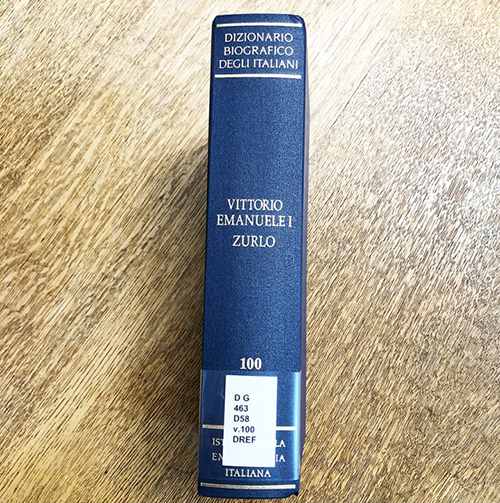
The publication of the hundredth (and final) volume of the Dizionario Biografico degli Italiani (Dbi, Biographical Dictionary of the Italians) last year by Istituto della Enciclopedia Italiana (Istituto Treccani) is a momentous occasion that may have been overshadowed by the global pandemic when libraries were shuttered and cataloging backlogs amassed. In the spirit of other European projects such as the Dictionary of National Biography (UK), the Diccionario biografIíco español (Spain), and the Allgemeine Deutsche Biographie (Germany), this ambitious biographical dictionary was conceived in 1925 with national-patriotic criteria in mind during the first phase of the National Fascist Party’s consolidation of power in Italy. Because of setbacks during and following World War II, the first volume did not appear in print until 1961 yet nearly every year thereafter, at least one or two volumes were added to the evolving reference set.
The enterprise endeavored to include the most illustrious figures in the history of Italy from the fall of the Western Roman Empire to the present day. Responding to the needs of the digital age, these 40,000 scholarly entries with sources and bibliographies have been made freely available online (but not free of ads) and integrated with other reference works they publish. While new entries are added to the online portal which also comprises Enciclopedia dell’Italiano, Dizionario di Filosofia, Enciclopedia Machiavelliana, Enciclopedia del Cinema, etc., entries in the print tomes are subject to the era in which they were authored. One of the conditions for inclusion in the Dbi is that of being deceased. According to its current director Raffaele Romanelli, the work is doomed to bear witness only to the past if worthy cultural figures are overlooked. He explains, “I have here a ready list of Italians who passed away this year: Alberto Arbasino, Franca Valeri, Rossana Rossanda. Will they all be destined for exclusion?”
The neo-Hegelian idealist philosopher, educator, and fascist politician Giovanni Gentile, who was also director of the Enciclopedia Italiana, referred to the work as “the golden book of the Italian stock.” In recent years, the notion of relevance has expanded to the world of business, technology, even of media and fashion, and includes previously unthinkable icons such as gay activist playwright Mario Mieli, notorious pornstar Moana Pozzi, and soccer heroes Enzo Bearzot and Dino Viola. According to Romanelli, there really never was a predefined canon. “To give an idea of the criterion, I would have liked to have included Pinocchio and Don Abbondio, non-existent but fundamental,” he quipped. Naturalized citizens such as the Swiss botanist Daniel Bovet and the mezzo-soprano Cathy Berberian of Armenian-American descent are included but entries for women remain overall at an appalling four percent. There are entries for fiction writers Natalia Ginzburg and Elsa Morante but it could be a long time before we see one for famous living writers such as Elena Ferrante. In 2015, the influential feminist art critic Carla Lonzi was added to the online version. Fans of the late philosopher, writer, and linguist Umberto Eco who died in 2016 still awaits an entry in the Dbi.
UC Berkeley is one of three dozen libraries across the country with the complete print set of 100 volumes. Most research libraries canceled their standing orders somewhere along the way. But what does this mean now when updates are not possible in a standard reference work such as this? Does the whole work become a cultural relic forever frozen in the epoch in which it was created? The lack of a critical lens and blatant exclusion of worthy cultural, political, scientific, and historical figures is reason enough to keep updating the work, illuminating the overlooked both from Italy’s past and recent years. While promises of forthcoming appendices and the technological capability of Trecanni to insert new entries and revise old ones in the online edition, the fate of this national reference work and others like it remains unknown. Students continue to rely, as many of us do for quick look-ups, on Wikipedia as the golden age of cumbersome print reference works sunsets. The burning question we should be asking ourselves is not what we would do without Wikipedia but what would we do without these print reference treasures, or knowledge bases, that constitute its foundation?
Sources consulted
Dizionario Biografico degli Italiani. Istituto della Enciclopedia Italiana fondata da Giovanni Treccani, https://www.treccani.it/biografico. Accessed 31 March 2022.
“Dizionario biografico degli italiani – Immagini.” YouTube, 14 December 2010.
https://youtu.be/pul4bOZ7lAs. Accessed 31 March 2022.
Fiori, Simonetta. “L’ultimo degli italiani.” La Repubblica, 12 December 2020. https://ricerca.repubblica.it/repubblica/archivio/repubblica/2020/12/12/lultimo-degli-italianiRobinson23.html. Accessed 31 March 2022.
“Istituto della Enciclopedia Italiana.” Enciclopedia on line. Istituto della Enciclopedia Italiana fondata da Giovanni, https://www.treccani.it/enciclopedia/istituto-della-enciclopedia-italiana. Accessed 31 March 2022.
Neveu, Bruno. “Biographie et historiographie: Le Dizionario biografico degli italiani.” Journal des Savants, vol. 1, no. 1, 1971, pp. 32–67, https://doi.org/10.3406/jds.1971.1240. Accessed 31 March 2022.
Sofri, Adriano. “Un monumento di civiltà: il centesimo volume del Dizionario biografico italiano.” Il Foglio, 23 December 2020. https://www.ilfoglio.it/piccola-posta/2020/12/23/news/un-monumento-di-civilta-il-centesimo-volume-del-dizionario-biografico-italiano-1588368. Accessed 31 March 2022.

Originally published in the European Studies Section Newsletter of the Association of College and Research Libraries.
Trial of Afghan Central Press at UC Berkeley Library
We have set up a thirty-day trial of Afghan Central Press at UC Berkeley Library beginning November 15, 2022.
The vendor description is as follows,
“The Afghan Central Press collection brings together four national, Kabul-based publications of Afghanistan whose long runs and prominence provide a concentrated vantage point for understanding developments in Afghanistan for much of the twentieth century. The English-language Kabul Times is presented alongside Pushto publications Anīs (انیس, Companion), Hewād (هیواد, Homeland), and Iṣlāḥ (اصلاح, Reform).”
The collection provides full-text access to over fifty thousand individual issues in Dari (Persian), Pushto, and English languages.
The Afghan Central Press collection is hosted on Eastview’s Global Press Archive platform.
Cuba: Grito de Yara (10 October 1868)
Each year, on 10th October, the Cubans all over the world commemorate the call for national independence. The “Grito de Yara,” is one of many important events in the complex historical trajectory of Cuba that unleashed the potential of the national consciousness through rebellions against the Spanish imperial authorities. The full text of the “Manifiesto de la Junta Revolucionaria de la Isla de Cuba” can be read by clicking on the link here.
At UC Berkeley Library, despite our West Coast location and our Pacific Rim orientation, we have a large collection of books that will enlighten our readers about what does “Grito de Yara” means. The other essential Open Access source is dLOC (Digital Library of the Caribbean) where one can browse documents related to the “Grito de Yara.“
Below are some titles that might of interest to the readers of this blog. Since we believe in the equitable access, I am providing some links to the full-text of these items.
Below is a clip from a film,
Professor Rebecca Herman’s New Book Published: Cooperating with the Colossus A Social and Political History of US Military Bases in World War II Latin America Cooperating with the Colossus A Social and Political History of US Military Bases in World War II Latin America

Author:Rebecca Herman, the image is being used for academic, educational, noncommercial purposes only.
UC Berkeley’s Professor Rebecca Herman‘s (History) new book –Cooperating with the Colossus A Social and Political History of US Military Bases in World War II Latin America on our entanglement in Latin America since the World War II is one book that I feel honored to post about in this blog.
According to the Oxford University Press, the book has several interesting facets that are quoted from its website as follows,
- Offers a new perspective on the period of World War II and its importance in the longer history of US-Latin American relations
- Brings together the local, national, and international arenas in which the history of wartime basing unfolded
- Integrates the international history of US-Latin American relations together with local histories of labor, race, gender, and law
- Moves between the realm of high politics and the ground-level social and cultural histories of the communities surrounding US bases.
I am also pleased to post a video of her presentation at the CLAS-Berkeley.
We have access to its electronic avatar through our catalog. Thank you, Professor Rebecca Herman, for always motivating me to do my best to collect difficult to find materials from Latin America!
September 22: National Hispanic Heritage Month Celebration at UC Berkeley Library
Celebrate National Hispanic Heritage Month at the University of California-Berkeley’s Library!
The event will take place on Thursday, September 22 from 12 noon to 1:15 PDT/ 3 pm to 4:14 pm EDT.
The event is open and free to all with prior registration. Please first sign into your personal or institutional zoom accounts and then register.
http://ucberk.li/3sb
Speakers (in alphabetical order)
José Adrián Barragán-Álvarez
Curator, Latin Americana
The Bancroft Library, UC Berkeley
Lillian Castillo-Speed
Head Librarian at Ethnic Studies Library, UC Berkeley
José Montelongo
Maury A. Bromsen Curator of Latin American Books
John Carter Brown Library, Rhode Island
Moderator: Liladhar R. Pendse, Librarian for the Caribbean and Latin American Studies
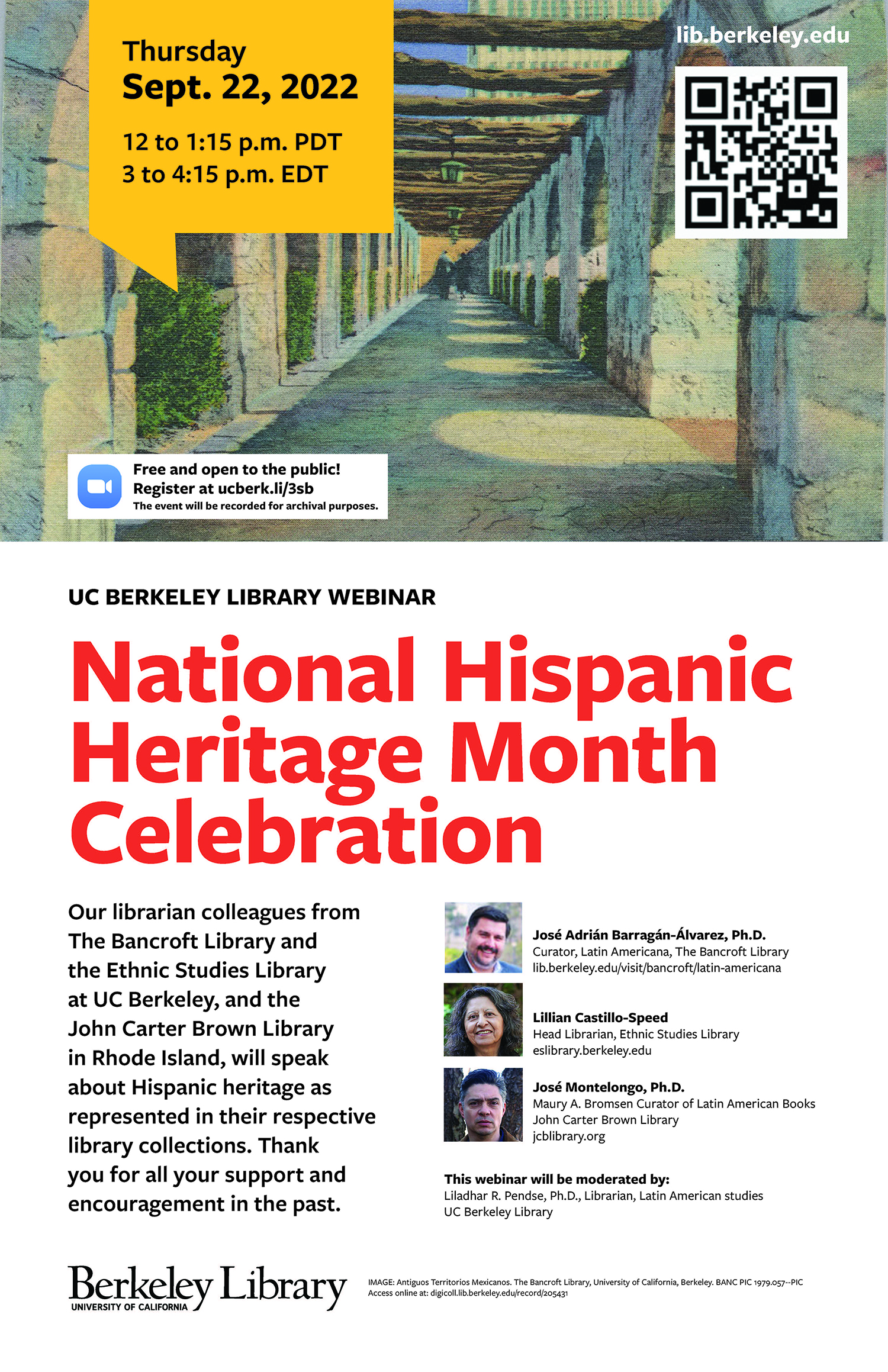
Grito de Dolores, Aniversario de la Independencia and Fiestas Patrias
Each year, Mexico marks an anniversary of its independence. One of the revered heroes of Mexico has been Fr. Miguel Hidalgo y Costilla, whose Grito de Dolores has been frequently used as a rallying tool against the perceptions of injustice. UC Berkeley’s Library is rich in print and analog materials on Mexico’s history. Fiestas Patrias is one essential component of the holiday celebration, both here in the United States and Mexico.
Recently, I was surprised to see a box waiting to for me in the office that was mailed to me by the FCE in Mexico as a gift to the library. Below are some scanned images of the books that were in that box. Not all the books below deal with the Independence of Mexico, however these represent cultural and informational objects that inform their readers of Mexico’s rich yet complicated history and literature.
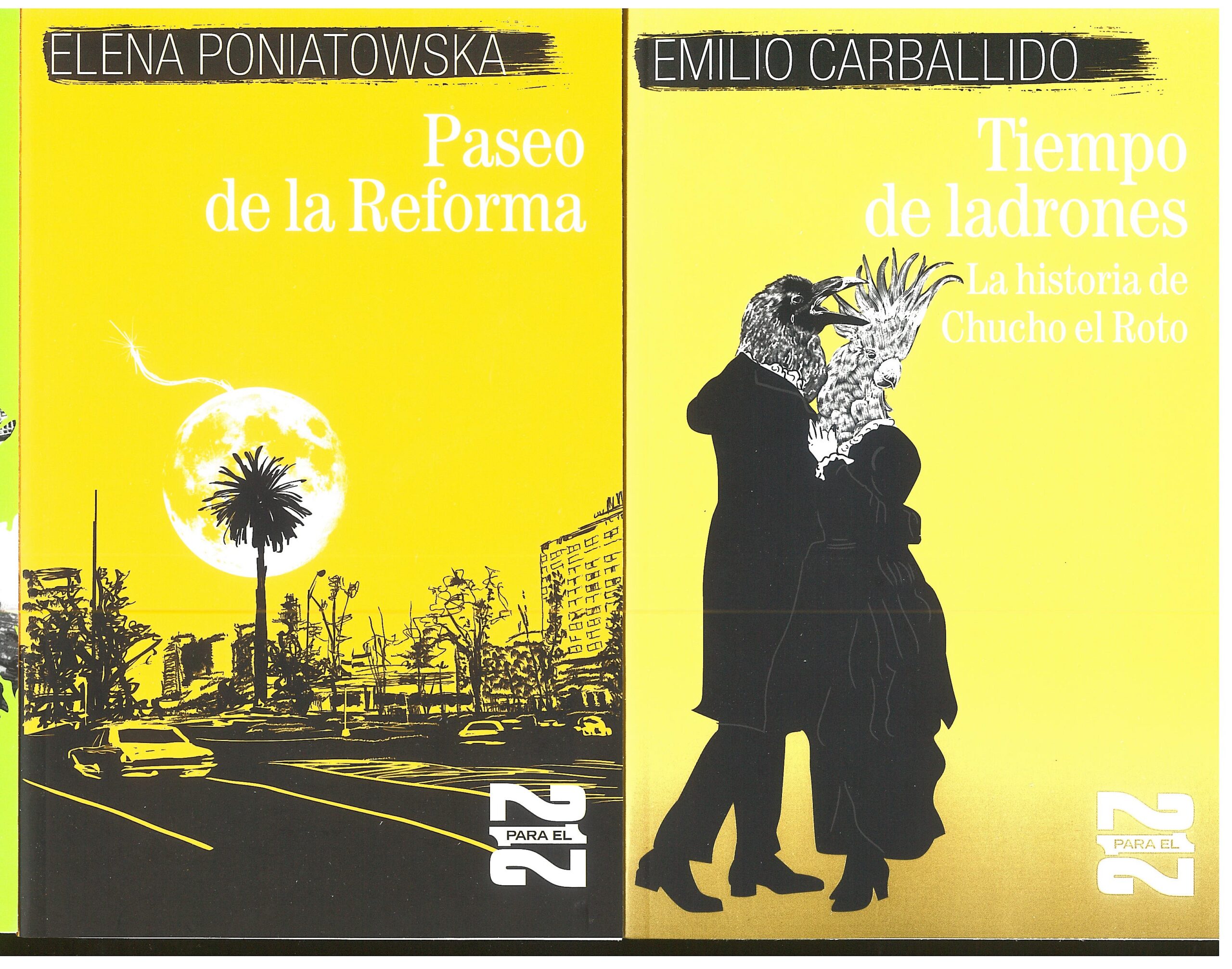
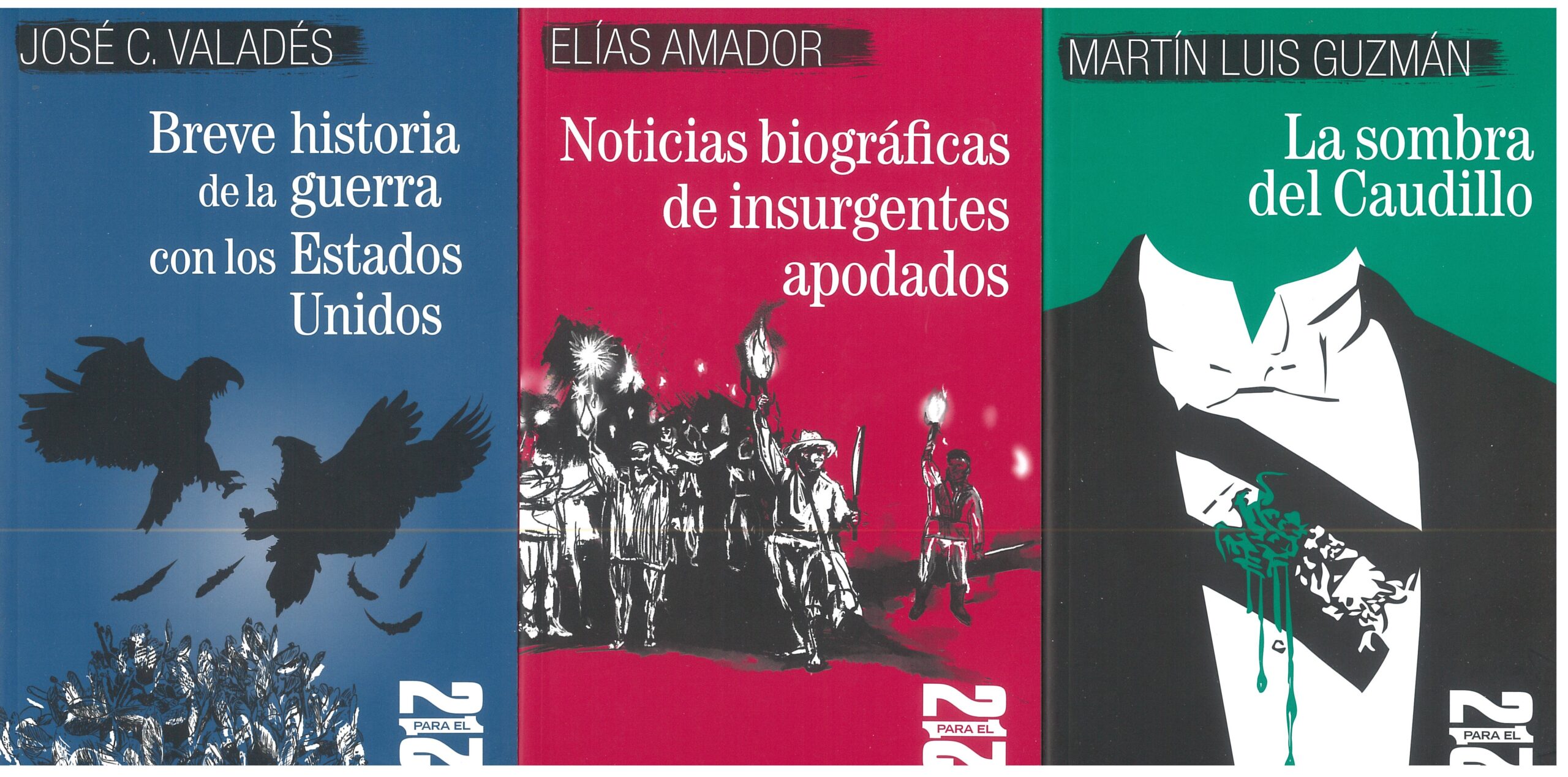
I leave you with a recent video of one of Mexico’s prolific writers and historian, Paco Ignacio Taibo II. We do have many books that deal with the subject of El Cura Hidalgo.
Besides this video, the resilience of el pueblo to survive through odds is something that inspires me to serve our students and faculty from diverse backgrounds as a librarian at a public academic library of University of California.
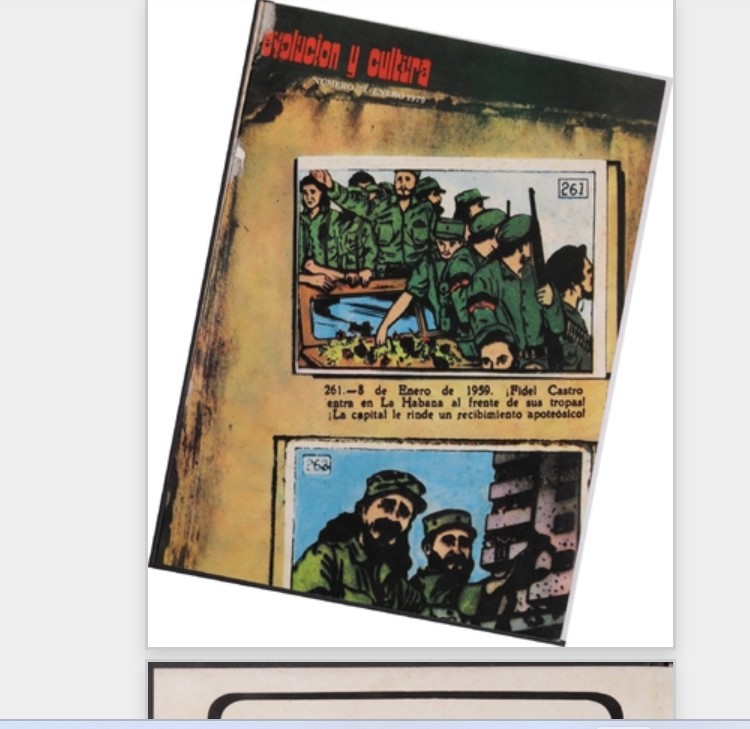
![The Art of Witnessing: Francisco de Goya's Disasters of War [cover]](https://update.lib.berkeley.edu/wp-content/uploads/2023/01/art-witnessing.png)
![Giotto's Arena Chapel and the Triumph of Humility [book cover]](https://update.lib.berkeley.edu/wp-content/uploads/2023/01/giotto.jpg)
